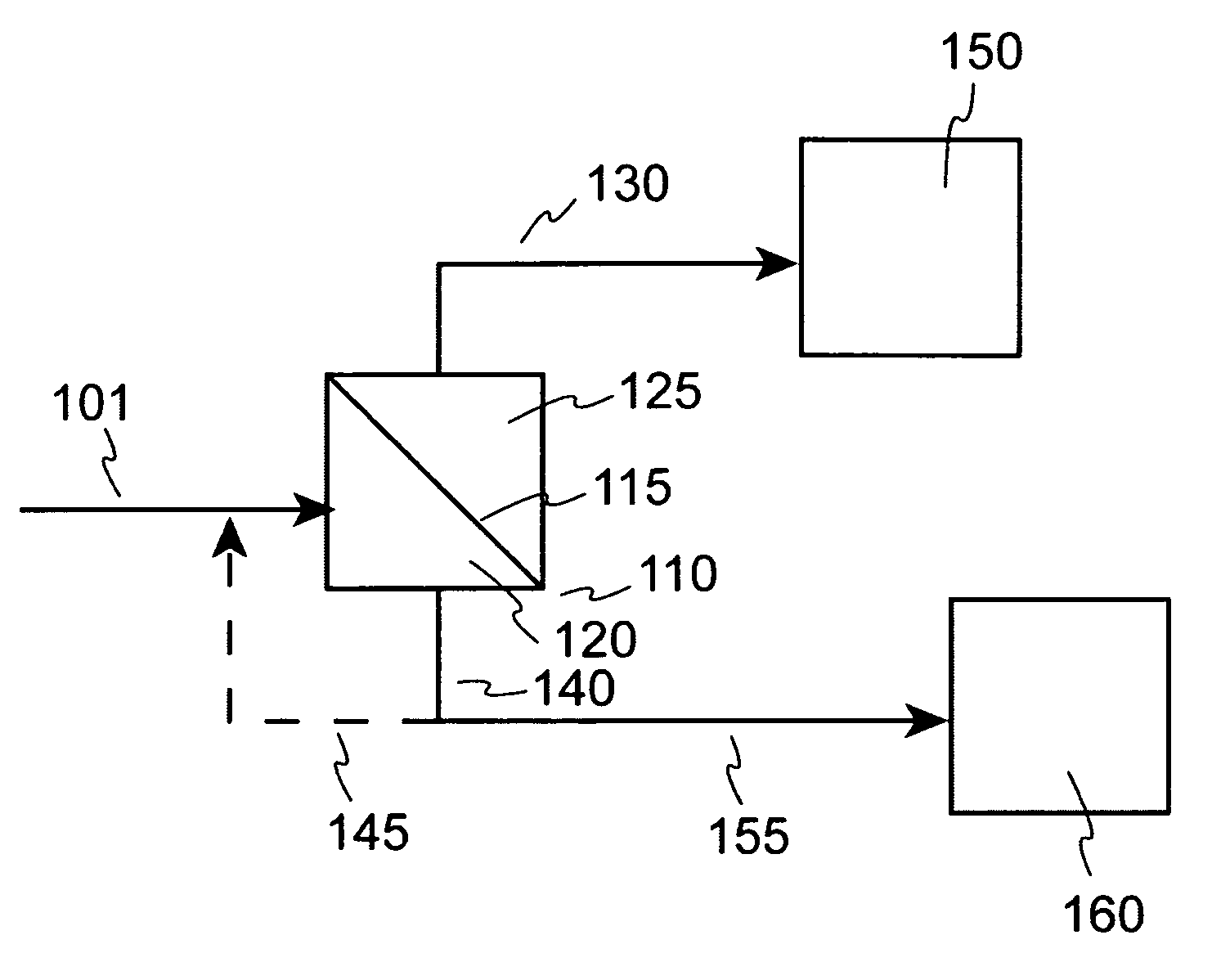Visbreaking yield enhancement by ultrafiltration
a technology of ultrafiltration and visbreaking, which is applied in the direction of hydrocarbon oil cracking process, thermal non-catalytic cracking, membrane technology, etc., can solve the problems of reducing the yield of visbreaking, reducing so as to improve the quality and improve the efficiency of visbreaking reaction , the effect of improving the yield
- Summary
- Abstract
- Description
- Claims
- Application Information
AI Technical Summary
Benefits of technology
Problems solved by technology
Method used
Image
Examples
example 1
[0039]In this Example, the transmembrane pressure control setpoint was 2760 kPa (400 psi) (similar to Examples 2, 3, and 4). The combined feedstream temperature setpoint was 260° C. (similar to Examples 2 and 4). The fresh feed pump steady state flow rate was approximately 5.74 grams / min and the recycle pump steady state flow rate setpoint was approximately 15.235 grams / min. The ratio of the recycle flow rate to the fresh feed flow rate was approximately 2.654. This created a calculated crossflow velocity through the membrane modules of about 0.98 m / s (3.2 ft / s). The pilot plant unit was lined out to achieve a steady state operation to generate 50% permeate yield based on the fresh feed rate. After achieving steady state operation, a pair of permeate and retentate samples were collected for 17 hours and 50 minutes and analyzed.
example 2
[0040]In this Example, the transmembrane pressure control setpoint was again 2760 kPa (400 psi). The combined feedstream temperature setpoint was also 260° C. The fresh feed pump steady state flow rate was approximately 15.96 grams / min and the recycle pump steady state flow rate setpoint was approximately 72.097 grams / min. The ratio of the recycle flow rate to the fresh feed flow rate was approximately 4.517. This created a calculated crossflow velocity through the membrane modules of about 4.6 m / s (15.0 ft / s). The pilot plant unit was lined out to achieve a steady state operation to generate 50% permeate yield based on the fresh feed rate. After achieving steady state operation, a pair of permeate and retentate samples were collected for 16 hours and 25 minutes and analyzed.
example 3
[0041]In this Example, the transmembrane pressure control setpoint was again 2760 kPa (400 psi) but the combined feedstream temperature setpoint was raised to 290° C. The fresh feed pump steady state flow rate was approximately 31.44 grams / min and the recycle pump steady state flow rate setpoint was approximately 72.097 grams / min. The ratio of the recycle flow rate to the fresh feed flow rate was approximately 2.293. This created a calculated crossflow velocity through the membrane modules of about 4.6 m / s (15.0 ft / s). The pilot plant unit was lined out to achieve a steady state operation to generate 50% permeate yield based on the fresh feed rate. After achieving steady state operation, a pair of permeate and retentate samples were collected for 6 hours and 47 minutes and analyzed.
PUM
| Property | Measurement | Unit |
|---|---|---|
| pressure | aaaaa | aaaaa |
| temperature | aaaaa | aaaaa |
| boiling point | aaaaa | aaaaa |
Abstract
Description
Claims
Application Information
 Login to View More
Login to View More - R&D
- Intellectual Property
- Life Sciences
- Materials
- Tech Scout
- Unparalleled Data Quality
- Higher Quality Content
- 60% Fewer Hallucinations
Browse by: Latest US Patents, China's latest patents, Technical Efficacy Thesaurus, Application Domain, Technology Topic, Popular Technical Reports.
© 2025 PatSnap. All rights reserved.Legal|Privacy policy|Modern Slavery Act Transparency Statement|Sitemap|About US| Contact US: help@patsnap.com


